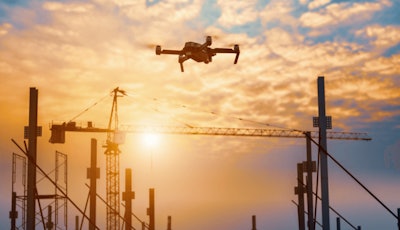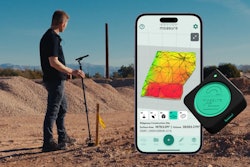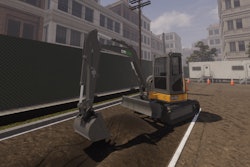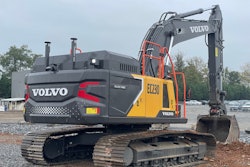
Last month, the U.S. House of Representatives passed legislation that would ban the importation and sale of new DJI drones into the U.S., over concerns about the company’s connection to the Chinese government.
If passed in the Senate and signed by the president, the bill requires the inclusion of DJI on a list of communications equipment or services determined by the Federal Communications Commission to pose an unacceptable risk to U.S. national security.
The Countering CCP Drones Act has been referred to the Senate Committee on Commerce, Science and Transportation.
DJI has long been a front-runner in the U.S. drone market and around the world. The MIT Technology Review reports DJI has more than a 90% share of the global drone consumer market.
Many contractors opt to use drones on their jobsites for surveying and inspections and their use has only risen in the past few years. A 2022 report from ConExpo-Con/Agg stated drones are being used on 55% of projects – up from 48% in 2021 and 36% in 2022 – and are used by 46% of civil contractors.
Current Models Appear Safe, but Future Tech in Danger
Should the bill become law, it doesn’t appear it would impact the ownership and operation of DJI drones that have already entered the U.S. market – only future models would be prohibited.
In a statement for Equipment World, DJI had the following to say about the potential impact the ban would have on operators:
“It’s hard to say for certain. As it stands, the Countering CCP Drones Act may not immediately impact your current drone fleet. This means users can continue to fly and use the DJI drones that they have.”
DJI alleges the bill would allow the FCC to “create a process to revoke the equipment authorizations for your existing drone models in the future.”
A bigger concern for contractors’ business would be an inability to upgrade to DJI’s latest models and technology at some point in the future. DJI told Equipment World that the ban would “limit their [contractors’] freedom of choice in procuring the technology they need, which could ultimately add costs back into budgets.” DJI also alleged its competitors could be unable to fill the void in the market, with the ban leading to “shortages, higher costs and lengthy delays and backorders as they attempt to scale up to meet demand.”
As for its next steps, DJI told Equipment World the following:
“Our focus is to defend DJI’s ability to operate and keep our products available in the market. If that fails, we will reevaluate. We won’t abandon the U.S. market.”
Equipment World reached out to several U.S.-based drone manufacturers to ask about their ability to fill a market void if new DJI drones are banned and will update this story with any responses it receives.
A DJI User’s Perspective: No Cheap U.S. Alternatives
Zach Pieper, co-owner and director of operations for Quantum Land Design, which prepares and manages 3D models for machine control systems for contractors, has a fleet of DJI drones. He also sells them and processes drone data for contractors.
Pieper notes his business has trended away from flying drones for contractors and more toward processing their data and selling the drones. He’s seeing more contractors buy and operate their own DJI drones for surveying instead of scheduling with and waiting for another company to do it. He forecasts that trend will continue to grow.
However, he predicts that a ban could reverse that trend, as the cost of many drones manufactured in the U.S. are significantly higher and the flow of DJI drones into the country could slow as new models are unable to enter.
“The U.S.-based drone systems are great, but they're much, much more expensive,” Pieper says. “It’s pretty hard to talk your average earthmoving contractor into a $20,000 to $30,000 drone system, where a $5,000 system is easy to justify.
“After a few months or so, contractors might have to reach out and hire contractors to come out and fly for them. And then after that, hopefully, the U.S. industry can catch up and come up with a fairly priced drone with a good camera on it. That's all we need, plus some decent flight software.”
Pieper says there are some U.S. fixed wing drones with good capabilities, though they’re operated differently and more expensive. he believes only the largest contractors would be open to using them. He predicts that if the ban goes through, many U.S. drone companies will accelerate their product development to fill the void in the market.
Pieper’s entry into the drone market was driven by the appetite for drone applications and data processing that he saw among contractors.
“They're always looking to collect accurate topographic data at a reasonable cost,” he says. “They use that data to make decisions, they can prove the earthmoving volumes to their clients. They can use it to make management decisions about what type of hauling system to use or how to allocate their different resources.”
Not many customers have expressed a concern about the ban to Pieper, who says contractors are dealing with more important issues.
“The drones are inexpensive enough that if worse comes to worst and they had to shut it down, contractors have more than recouped that investment several times over,” he says. “I’d say these guys have bigger fish to fry than a $5,000 drone system.”













